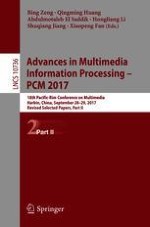2018 | OriginalPaper | Buchkapitel
Stereo Saliency Analysis Based on Disparity Influence and Spatial Dissimilarity
verfasst von : Lijuan Duan, Fangfang Liang, Wei Ma, Shuo Qiu
Erschienen in: Advances in Multimedia Information Processing – PCM 2017
Aktivieren Sie unsere intelligente Suche, um passende Fachinhalte oder Patente zu finden.
Wählen Sie Textabschnitte aus um mit Künstlicher Intelligenz passenden Patente zu finden. powered by
Markieren Sie Textabschnitte, um KI-gestützt weitere passende Inhalte zu finden. powered by
